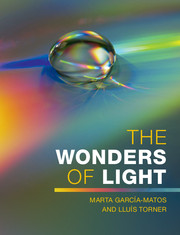FOCUS
Published online by Cambridge University Press: 05 July 2015
Summary
Focus is the principle behind vision. First, attention is focused on an object. Then a lens in the eye collects and focuses onto the retina (the screen of the eye) the light reflected or emitted by every point of the selected object. Finally, the information thus gathered is processed by the brain to construct a meaningful image.
In order to offer a distinct, significant, and almost instantaneous image of the world around us, the brain is obliged to focus on a narrow subset of relevant information. The input provided by our senses is selectively picked out, since processing the whole set of data would exceed the brain's computational capacity. (That might explain why evolution did not burden us with the power of microscopic vision: it would mean way too much information to process!)
To see small details beyond the limits reached by evolution, the aid of more-powerful tools is needed. Larger and stronger lenses in microscopes overcome the capacity of the human eye's lenses to collect and separately focus on the screen the light that arrives from two very near points of the sample. As a result, features of a structure indiscernible to the naked eye appear clearly differentiated. However, focus (and hence vision) is limited by a fundamental fact: light is a wave.
The wavelength of light involved in vision is approximately 500 nm. Points spaced apart by 200–300 nm cannot be distinguished by any conventional lens, for diffraction will cause two overlapping blurred spots instead of two well-differentiated image points. This fundamental limit for resolution is known as the diffraction limit of light. Scientists are currently busy trying to beat it using a variety of tricks, including the use of certain exceptional materials – metamaterials – to fabricate the future so-called super-lenses. However, current technology can already achieve an extraordinary control of the interaction of light and matter at the nanoscale, providing a set of alternative methods to image details under the diffraction limit of light. These techniques constitute the field of super-resolution microscopy.
- Type
- Chapter
- Information
- The Wonders of Light , pp. 25 - 32Publisher: Cambridge University PressPrint publication year: 2015

